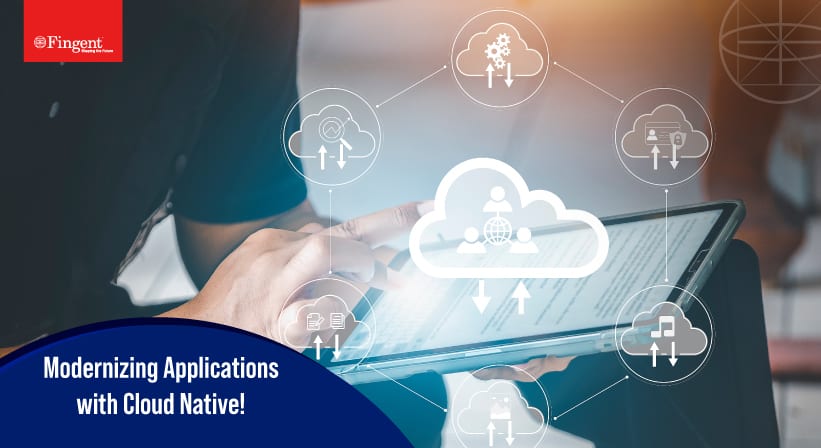Why It’s Time to Embrace Cloud and Mobility Trends To Recession-Proof Your Business?
Cloud and Mobility: The two pillars to recession-proof your business
- Introduction
- How Does the Recovery Shape of The Coronavirus Recession Look?
- What is a recession-proof business?
- What can business leaders do now?
- How Do Enterprise Mobility Solutions Help in The Current Crisis?
- Five Unique business benefits of enterprise mobility during recession!
- Recession-proof your business by embracing Cloud
- Cloud is not a future aspiration rather an urgent mandate
- How can you capture the full value of the Cloud to recession-proof your business?
- Staying Afloat Despite the Crisis
- Are You Keeping Up with The New Normal?
Introduction
In just a matter of weeks, the COVID-19 pandemic has chopped off nearly a third of the global market cap triggering panic across the world and shaking the confidence of investors. According to an analysis by the World Bank, the “coronavirus disease pandemic and ensuing lockdowns in several parts of the world have led to a recession unmatched in eight decades.”
The coronavirus-inflicted recession which started unfolding itself in February and March of this year has left the macroeconomic landscape in a state of dilemma. For the past six months, business leaders have been trying to navigate shattered expectations and continued uncertainty forcing them to rapidly shift their expectations for the future. During the Great Recession of 2007 to 2009, unemployment soared to almost 10 percent by January 2009. From then on, recession-watchers have been equipped for the reversal of fortunes.
The economic distress caused by coronavirus may be the trigger that leads to a prolonged slump. If so, it is time for workers, investors, and entrepreneurs to seek refuge in recession-proof business practices. This article explains why it is the perfect time to recession-proof your business through cloud and mobility trends.
How Does the Recovery Shape of The Coronavirus Recession Look?
Recession is defined as a significant decline in economic activity lasting more than just a few months and is evident in decreased levels of real income, real GDP, industrial production, employment, and wholesale-retail sales. According to the forecast by the World Bank, the global economy will shrink by 5.2% by the end of this year culminating in the deepest recession since the second world war. The World Bank Prospects Group Director Ayhan Kose noted, “the Covid-19 recession is singular in many respects and is likely to be the deepest one in the advanced economies…The current episode has already seen by far the fastest and the steepest downgrades in global growth forecasts on record. If the past is any guide, there may be further growth downgrades in store, implying that policymakers may need to be ready to employ additional measures to support activity.”
Thankfully, all recessions including the present recession will not last forever. The economy will reopen at some point and start growing again. Unfortunately, the uncertainty of the times makes recovery shapes more widely dispersed. Recovery shapes are not about speed but more about the eventual return to pre-crisis levels. Therefore, the expectation for the path of recovery is hotly debatable. Perhaps we can confidently say that full return to the pre-crisis stage looks ever more challenging with the passage of time.
This raises a few pertinent questions:
- Can any business be recession-proofed?
- What can business leaders do?
- How do enterprise mobility solutions help in the current crisis?
- How can they leverage technology to recession-proof their business?
Read more: Navigate Business Impact Of COVID-19 With These Hot Technologies
What is a recession-proof business?
Recession-proof businesses are defined as industries that can stay afloat during terrible economic times or somehow survive unscathed or a business that has a better chance of riding out a recession.
What can business leaders do now?
Debatably, six months into the corona crisis, economic outcomes are not quite certain. Yet, business leaders can take these steps to prepare for the next phase of the corona crisis.
1. Prepare early
A key to surviving any recession is to act as early as possible. The willingness to make strategic and necessary moves decides if a business is weathering the storm of economic downturn or is sinking their ship.
2. Take stock
As economies reopen with varying degrees of success, now is the right time for business leaders to take stock and to reallocate resources appropriately. Take a realistic look at what is possible for your business and accept what is not possible. This is an important step towards creating goals that fit the new normal.
3. Build resilience
COVID-19 has demonstrated an immense power to surprise and upend well thought out assumptions about how business works and who is likely to win. Businesses should thus actively prepare by creating optionality to maneuver. You may have to shift your mindset from growth to survival.
4. Capture advantage
Leaders must leverage all technological trends to reinvent their superpower. Explore crisis-specific solutions to adapt to the new normal faster than ever before.
Read more: Fingent’s Response to COVID-19 Business Implications
How Do Enterprise Mobility Solutions Help in The Current Crisis?
Enterprise mobility solution services basically refer to solutions for businesses that enable employees to use their personal mobile devices securely from anywhere to enhance productivity for the company. For example, an employee should be able to access any uploaded data at any given point through any device that’s available such as a Smartphone, Laptop, or Tablet, and carry out tasks required by the company and thus increase productivity.
What does it offer?
Enterprise mobility offers employees flexibility, freedom, and choice. It can make a huge positive impact on their job satisfaction while increasing their work hours. Most businesses practice enterprise mobility in some way. Along with work flexibility, it helps businesses to maximize profits and reduce costs.
Five Unique business benefits of enterprise mobility during recession!
During the recession, enterprise mobility offers endless opportunities that help broaden the sphere of your customers and your business.
1. Improved employee productivity
Mobile applications mechanize paper-driven procedures to streamline work processes. This brilliant approach enhances information exactness and grants clients access to updated and often real-time data. During situations such as a lockdown, it allows companies to build propelled functionalities improving employee productivity.
2. Reduces operational cost
Since the implementation of enterprise mobility enables employees to work from home, it is bound to minimize the cost of your infrastructure drastically. Also, if it becomes necessary for some employees to come to the office, mobility solutions can enable workspace collaboration for your mobile environment across multiple platforms and devices.
3. Efficient collaboration
When many employees work on the same project, they will have to coordinate with each other regularly. With enterprise mobility solutions they can easily share data and important information through mobile devices, update their work progress, and collaborate continuously.
4. Data security
Security is one of the most important requirements of any enterprise. Enterprise mobility management offers businesses the necessary levels of data security and risk management allowing a secure communication medium.
5. Provides customer satisfaction
Customer service is the top business priority for all enterprises. Enterprise mobility facilitates quicker customer service increasing the customers’ trust in your business.
Read more: Enterprise Mobility Apps for Faster Business Growth
Recession-proof your business by embracing Cloud
Though cloud computing was increasingly adopted by large companies and startups in the last few years, the work-from-home culture during the pandemic has highlighted the critical advantages of using cloud-based solutions. Cloud integration services have open, continuous assistance, and discounts for their customers and prospective clients.
Internal cloud services can provide resources and orchestrate the entire application stack across different servers. The external cloud services can easily leverage the scale of application and infrastructure while providing an enhanced computing environment. This way, cloud solutions create several opportunities for both service providers and clients. It eliminates unnecessary spending of resources for work, successfully reducing the costs involved.
Read more: Top 6 Reasons Why You Should Move to a Cloud-Hosted ERP
Cloud is not a future aspiration rather an urgent mandate
Though the concept of cloud is not new, most enterprises remain in on-premise data centers. The current pandemic has reinforced the fact that the cloud is an urgent mandate at the heart of all businesses. You need an intelligent cloud journey that balances speed and value. Each migration should be started by mapping out the journey and determining how the cloud will empower the overall business strategy and goal. Once you migrate the majority of your workload to the cloud, you will be able to realize the full business value of the change. You will see how it makes your business resilient, efficient, and customer-focused.
How can you capture the full value of the Cloud to recession-proof your business?
1. Migrate at scale
The first step would be to align the entire enterprise including strong leadership from the top to provide direction. Second, focus constantly on realizing value throughout the migration process without getting stuck in a pattern of aimless experimentation. Finally, weigh out the cost savings against application complexity, data-location compliance requirements, and legacy needs. Realize the potential value and innovation that can be unlocked through cloud optimization.
2. Modernize
For your business to work with speed and agility, you need to think comprehensively about the data flow across all your systems. Hence, carefully consider your modernizing needs and long-term process that are based on a solid application discovery assessment. While planning a strategy, take into account where the organization is headed and why. Doing this will make you a cloud-first enterprise.
3. Optimize
Constantly monitor and optimize cost and capacity, manage consumption and performance, and leverage the right services from cloud providers to maximize the value/performance ratio and sustainability.
4. Innovate
Since the cloud enables experimentation at speed, try out several ideas at the same time and point to the right one quickly and securely. Gain access to cutting-edge technologies by collaborating with your partners.
Read more: Cloud Service Models Saas, IaaS, Paas – Choose the Right One for Your Business
Stay up to date on what's new

Recommended Posts

05 Nov 2023 B2B
Cloud 101 – Getting a Good Return on Your Business Cloud Investment!
In the digital age, cloud investment is your business's propulsion, offering flexibility, scalability, and a competitive edge. However, many companies don't fully reap the cloud's benefits. The cloud's potential remains……

15 Oct 2023 B2B
Hyperscaler Cloud Services: The Next Step In Business Cloud Investment!
Companies can save 20% of the total annual cost if they migrate to the cloud. Hyperscaler Cloud Services can enable businesses to experiment, build, innovate, and run any form of……

25 Jul 2023 B2B
A Quick Guide To A Successful Digital Transformation Journey!
Today, technology seamlessly weaves its way into every aspect of our daily lives. That's precisely what digital transformation is all about - a process that enables businesses to harness the……

28 Mar 2023 B2B
Cloud-Native: The Modern Way to Develop Software
For more than a decade, businesses in all industries have undergone a digital metamorphosis. This evolution is marked by a transition from on-premises software solutions to cloud-based computing technology. By……
Featured Blogs
Stay up to date on
what's new










